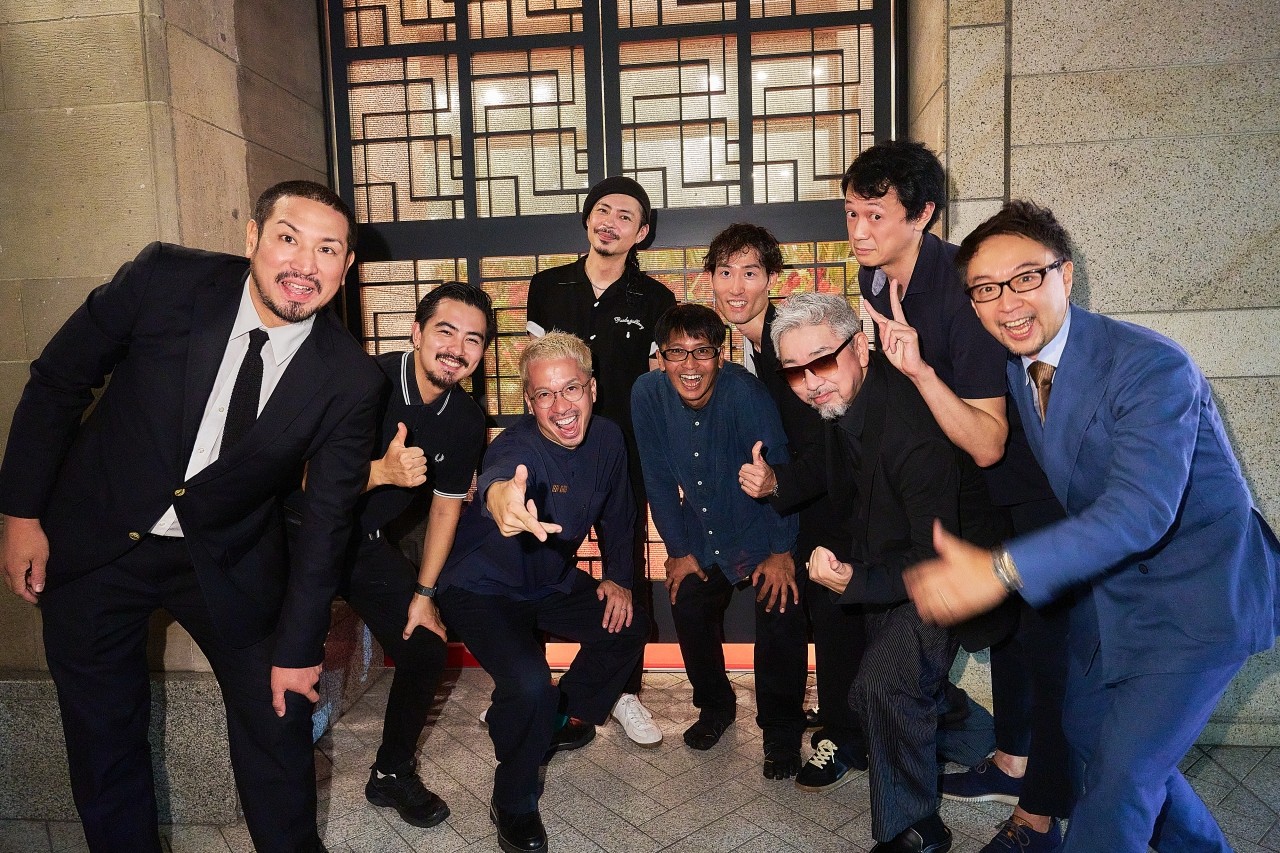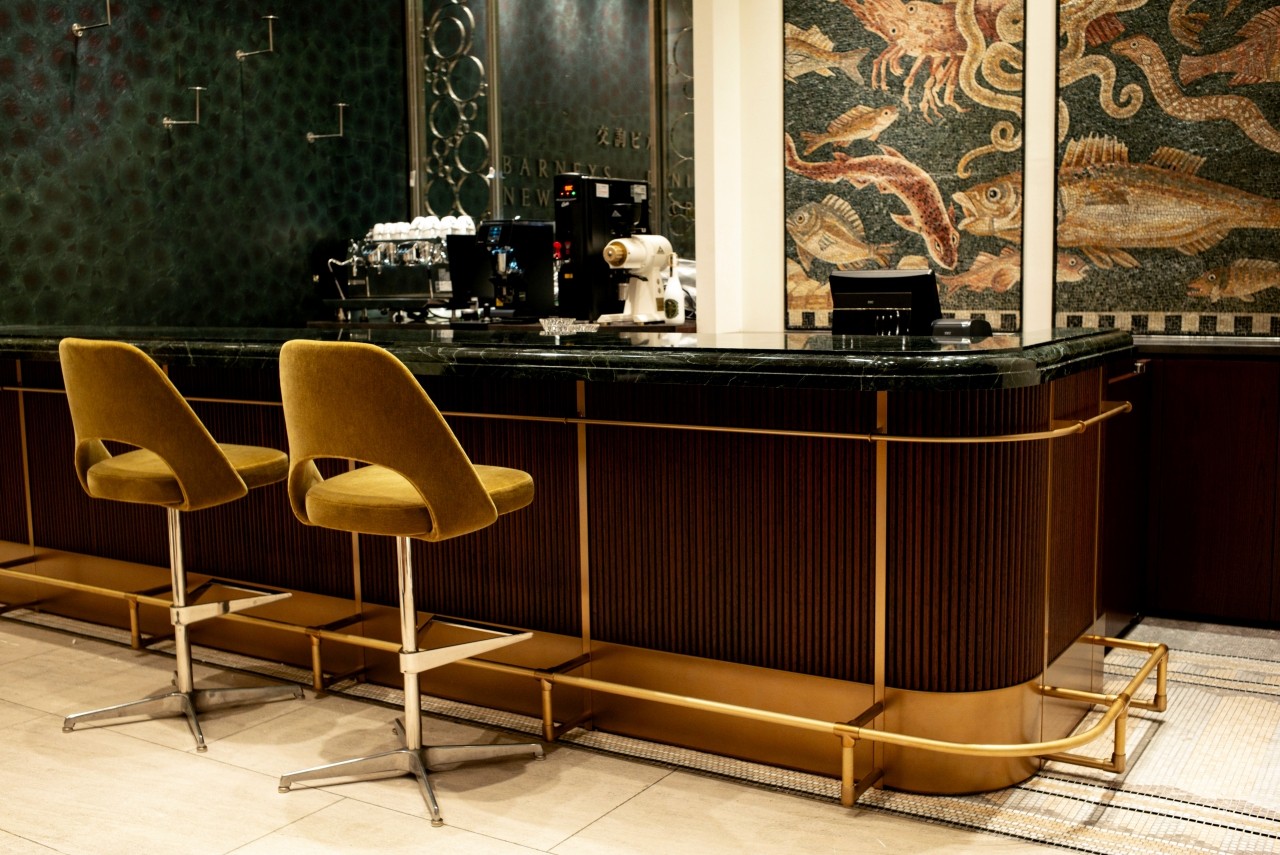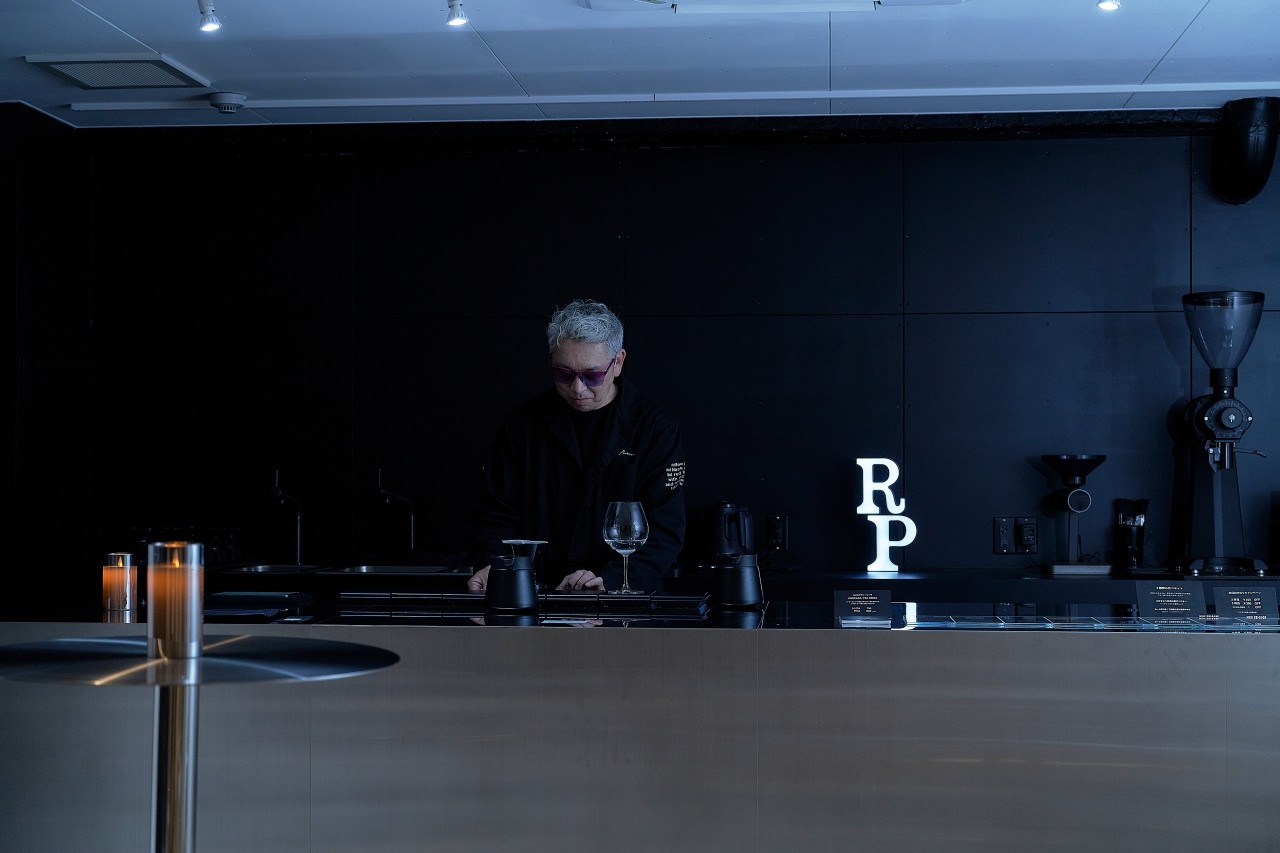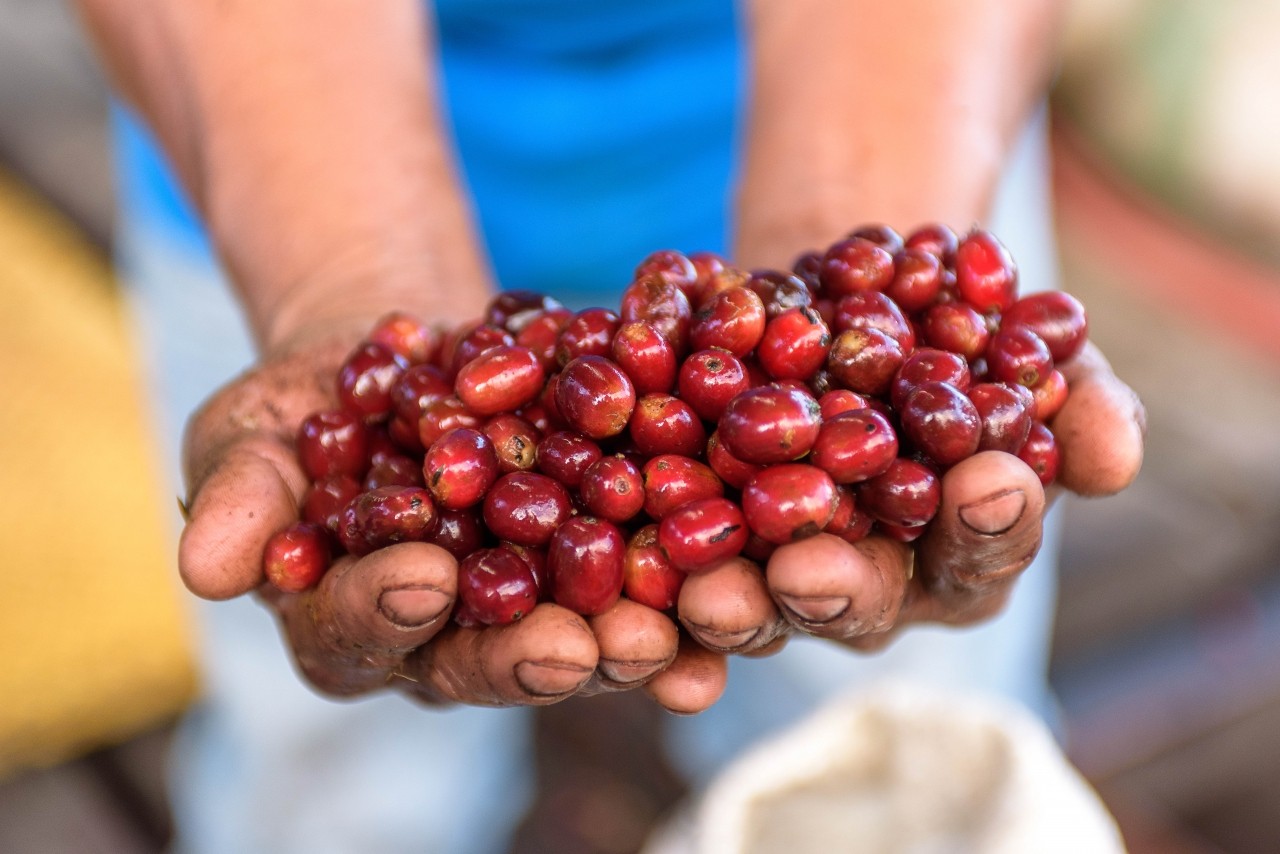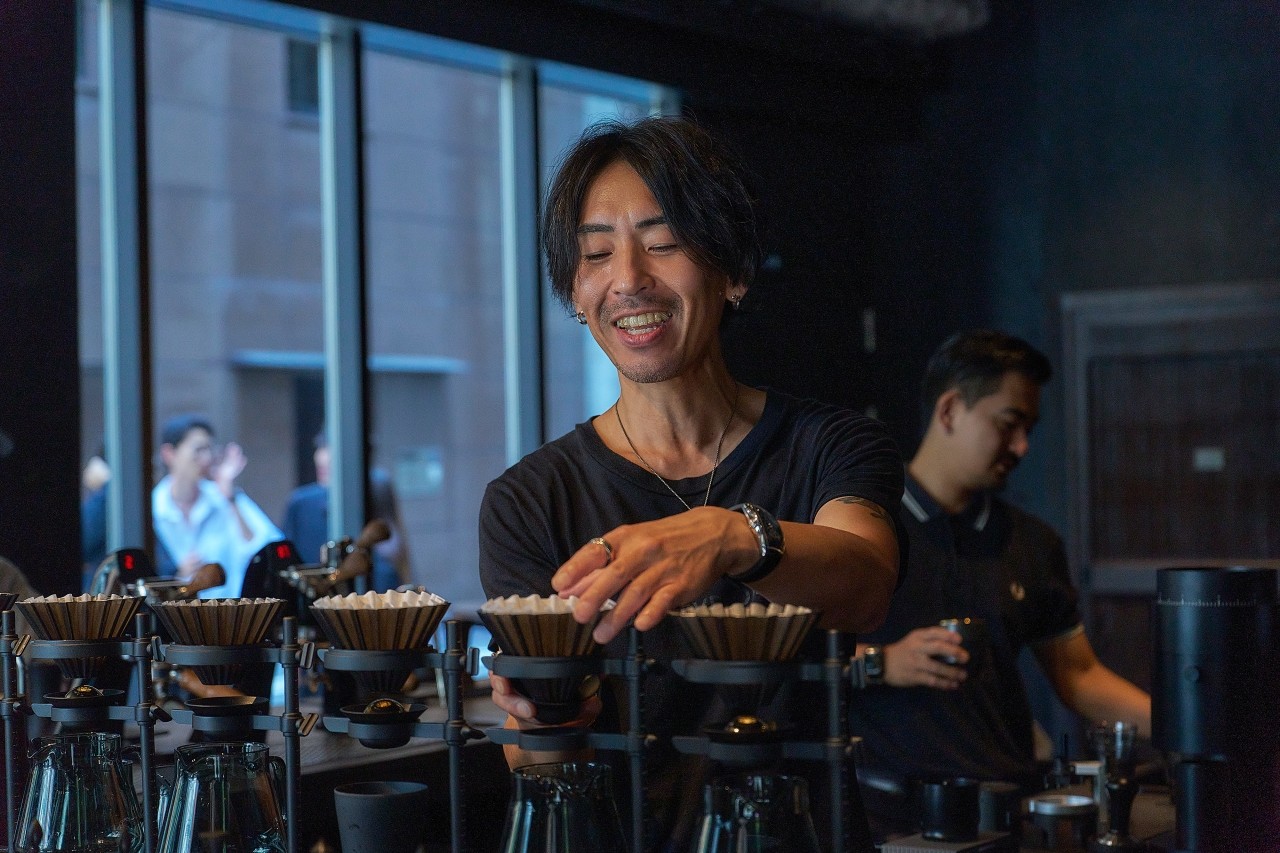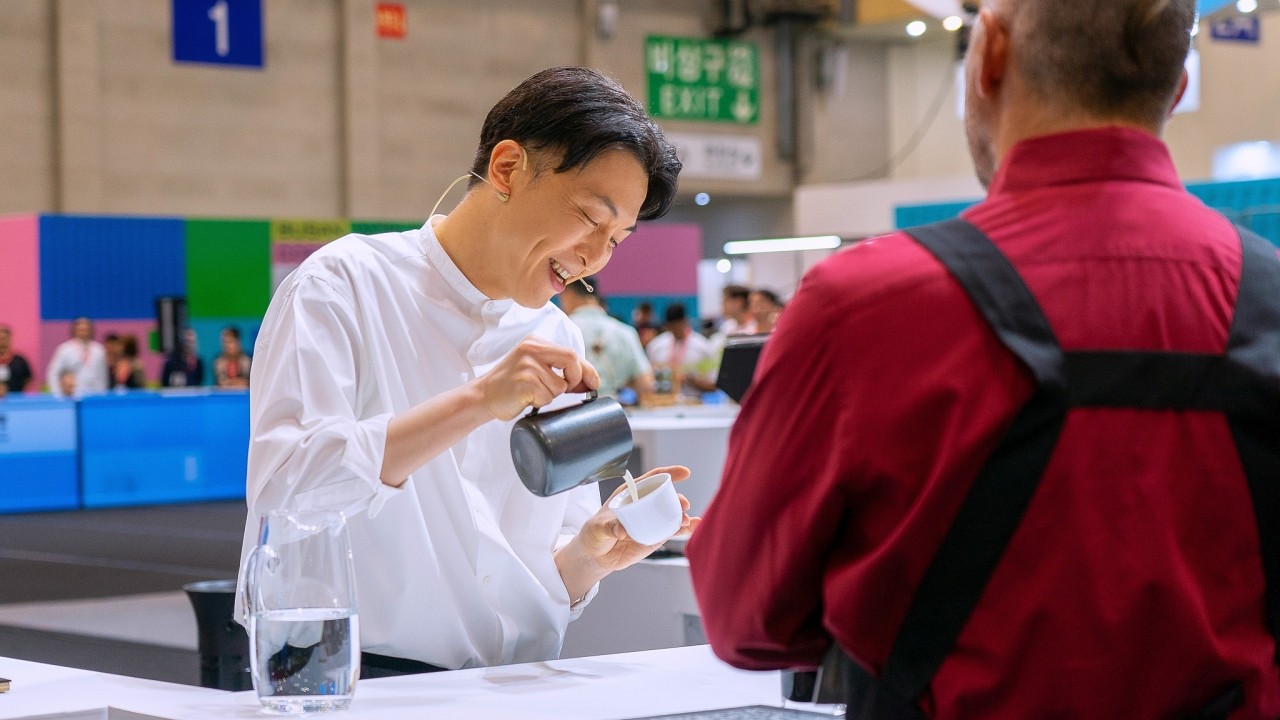Takeru Roaster Drink Comparison Review [GJE] Ethiopian Natural
This is the first review project by Takeru, a user who has been using CROWD ROASTER since its launch and who has been working in the coffee industry for a long time.
This time, we will be reviewing the "[GJE] Ethiopia Zelerum Coffee Washing Station Natural" roasted by Roast Design Coffee Mikami Hitomi and Fujiyama Hiroyasu of FUJIYAMA COFFEE ROASTERS .
Origin of Arabica seeds Ethiopia

This time, the green coffee that the roasters are comparing is "[GJE] Ethiopian Zelerum Coffee Washing Station Natural."
Most of the coffee distributed around the world can be broadly classified into two types: Arabica and Canephora, which is famous for Robusta.
Of these, the Arabica species is said to originate from Ethiopia, and Ethiopia is also a treasure trove of cultivated species that have not yet been studied or classified.
Most of the coffee distributed around the world can be broadly classified into two types: Arabica and Canephora, which is famous for Robusta.
Of these, the Arabica species is said to originate from Ethiopia, and Ethiopia is also a treasure trove of cultivated species that have not yet been studied or classified.
There are probably many people who like Ethiopian coffee, which has many brands with distinctive aromas.
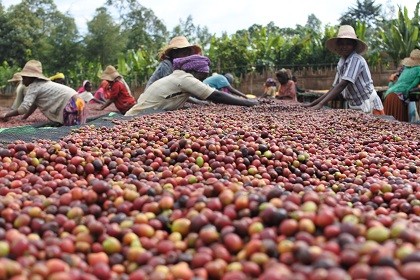
This time's brand is a natural process coffee that is dried with the pulp of coffee cherries still attached.
This is a natural method where the fruit is dried using Hikaru and wind for a long period of time, but if the drying method is not done properly, mold may grow or an unpleasant fermented aroma may appear. Difficult natural.
This is a natural method where the fruit is dried using Hikaru and wind for a long period of time, but if the drying method is not done properly, mold may grow or an unpleasant fermented aroma may appear. Difficult natural.
However, well-processed naturals have a lot of fans because they are very clean but still have the fruitiness and round mouthfeel that is unique to naturals.

Shin of Zelerum Coffee Washing Station
This brand is owned by Ethiopian exporter TRACON TRADING.The coffee washing station (a production processing facility) collects cherries harvested from nearby small-scale farmers and processes them. It seems that.
They are highly conscious of improving quality, and when receiving cherries brought in, they remove unripe and overripe cherries and only accept fully ripe cherries, which results in a higher awareness among growers.
Ethiopian coffee is often not very clean due to variations in the ripeness of cherries, a large number of defective beans, and immature production processes, so this seems to be expected.
This is a long introduction, but let's take a look at the bean side of roasted beans.
This brand is owned by Ethiopian exporter TRACON TRADING.The coffee washing station (a production processing facility) collects cherries harvested from nearby small-scale farmers and processes them. It seems that.
They are highly conscious of improving quality, and when receiving cherries brought in, they remove unripe and overripe cherries and only accept fully ripe cherries, which results in a higher awareness among growers.
Ethiopian coffee is often not very clean due to variations in the ripeness of cherries, a large number of defective beans, and immature production processes, so this seems to be expected.
This is a long introduction, but let's take a look at the bean side of roasted beans.
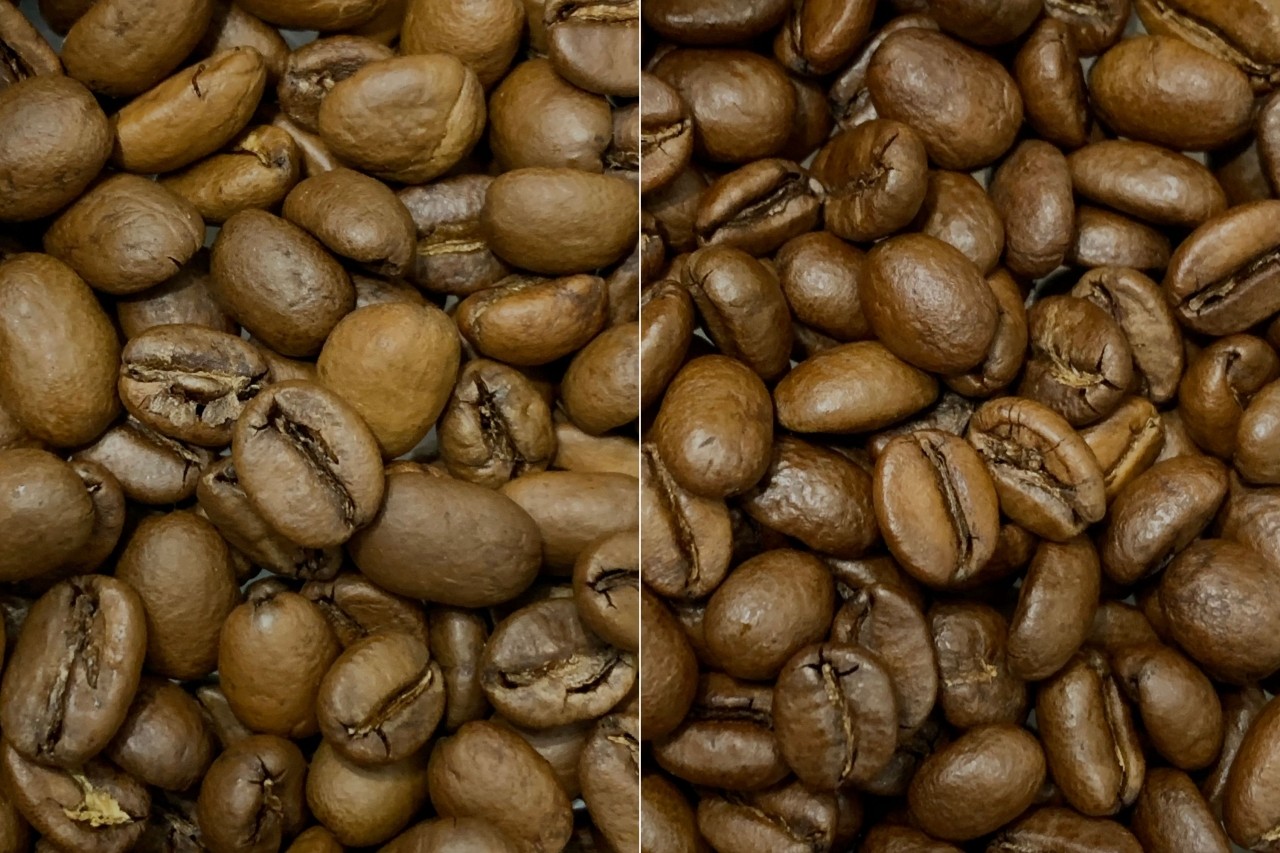
Roasting by Mikami Hitomi (left), Roasting by Fujiyama Hiroyasu (right)
This time, the "degree of roasting" completed by each roaster is different.
Hitomi 's roast on the left is "light roast." This is the lightest of the eight roasting degrees used by CROWD ROASTER .
Mr. Hiroyasu on the right roasts "medium roast". This is the degree of roasting called medium roast.
It's hard to tell from the Shin , but this brand is quite small.
However, although there is a difference in color due to the degree of roasting, there is not that much difference in the swell of the beans.
Both are quite small.
Now let's start brewing.
This time, the "degree of roasting" completed by each roaster is different.
Hitomi 's roast on the left is "light roast." This is the lightest of the eight roasting degrees used by CROWD ROASTER .
Mr. Hiroyasu on the right roasts "medium roast". This is the degree of roasting called medium roast.
It's hard to tell from the Shin , but this brand is quite small.
However, although there is a difference in color due to the degree of roasting, there is not that much difference in the swell of the beans.
Both are quite small.
Now let's start brewing.
extraction
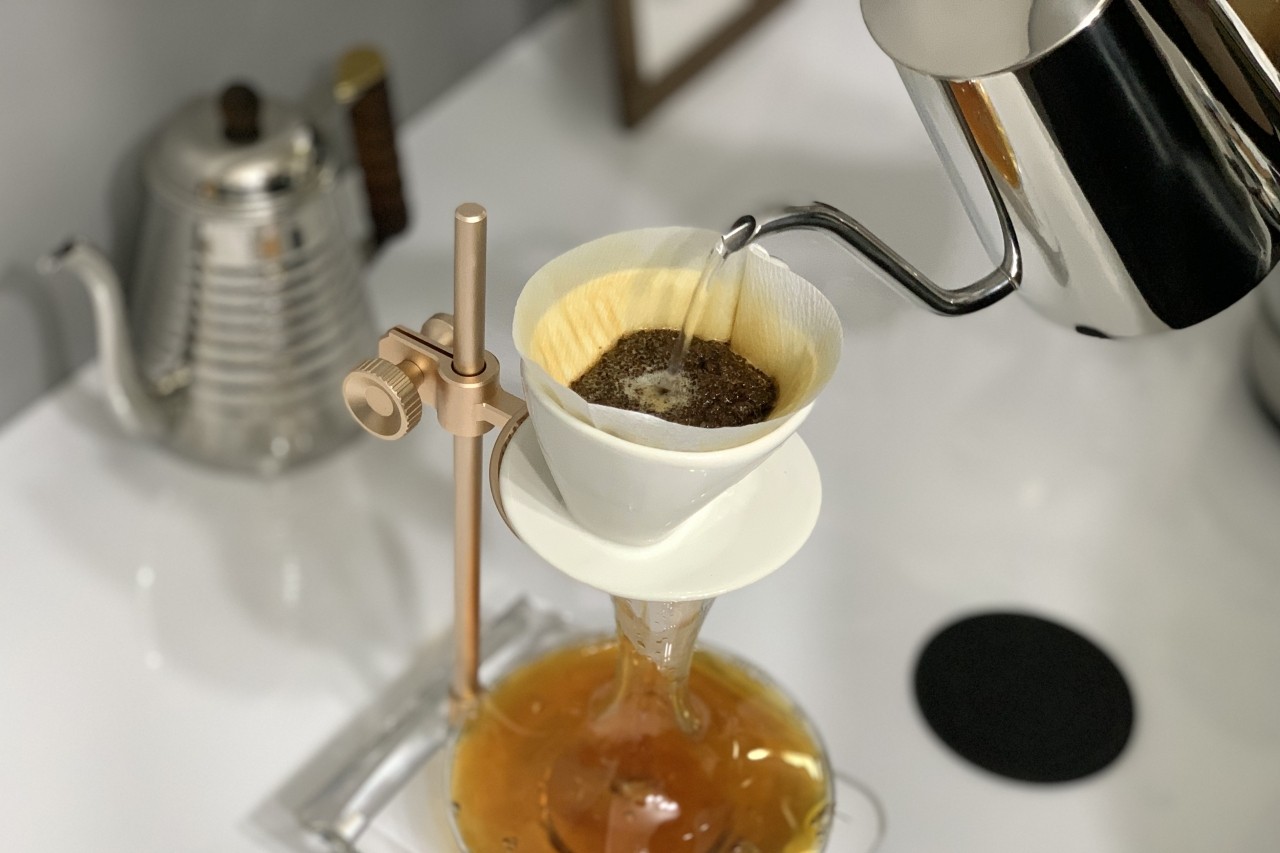
This time, the roasting level is different, but in order to bring out the natural mouthfeel and the flavor of the ingredients, both use Melitta drippers to extract 140ml of coffee from 14g of coarsely ground coffee beans. .
The tasting method is tailored to each bean, with the light-roasted Hitomi -san roasted in a wine glass, and the medium-roasted Hiroyasu -san roasted in a slightly larger cup.
Roast Design Coffee Roasted by Mikami Hitomi
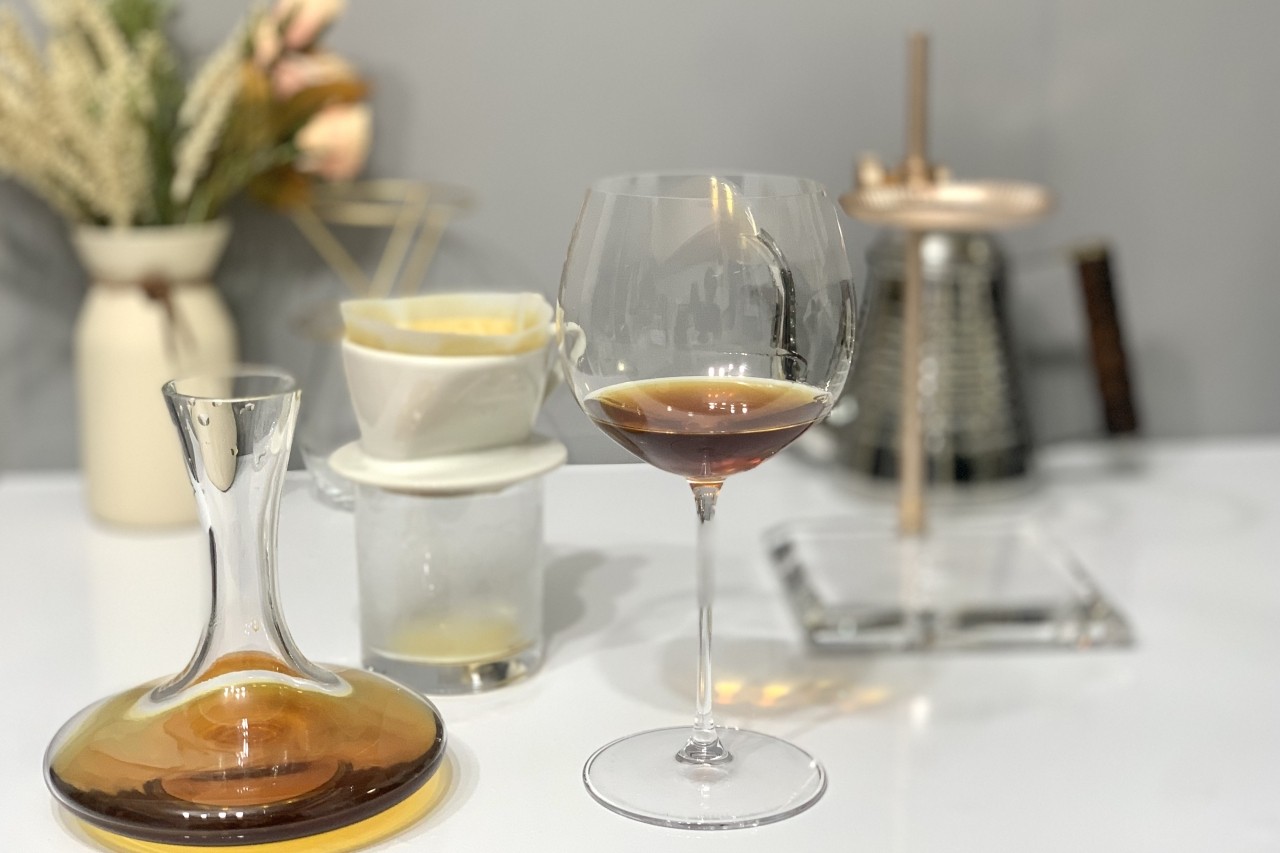
Delicate yet smooth mouse feel.
You can feel the flavor of chocolate and barley, and the sweet impression of custard cream.
It has a pale, delicate yet complex fruit flavor that can be interpreted as orange, strawberry, or cherry, making it very interesting.
To be honest, it doesn't give me the impression that it's Ethiopian or natural.
Gentle and delicate, yet firm and sweet, and smooth.
It's not a coffee with a flashy aroma or strong fruit flavor, but it is very sweet and delicious.
As it cools down, the impression of custard cream becomes stronger.
Also, there was a slight mulch-like scent and astringency.
Actually, I've had this brand [GJE] roasted by other roasters several times, and each one had this earthy impression and a bitterness after it cooled down. I felt a common impression.
That area really feels like Ethiopia.
However, it doesn't have that big of a negative impression, and I think it's a very interesting brand because you can enjoy the sweet taste.
Once it cooled down to room temperature, it started to look like an ale beer with a slight citrus aroma.
I wonder if the impression has changed from the barley and orange flavor that I felt when it was warm.
It's a very interesting coffee with a delicate yet firm sweetness and a complex aroma.
You can feel the flavor of chocolate and barley, and the sweet impression of custard cream.
It has a pale, delicate yet complex fruit flavor that can be interpreted as orange, strawberry, or cherry, making it very interesting.
To be honest, it doesn't give me the impression that it's Ethiopian or natural.
Gentle and delicate, yet firm and sweet, and smooth.
It's not a coffee with a flashy aroma or strong fruit flavor, but it is very sweet and delicious.
As it cools down, the impression of custard cream becomes stronger.
Also, there was a slight mulch-like scent and astringency.
Actually, I've had this brand [GJE] roasted by other roasters several times, and each one had this earthy impression and a bitterness after it cooled down. I felt a common impression.
That area really feels like Ethiopia.
However, it doesn't have that big of a negative impression, and I think it's a very interesting brand because you can enjoy the sweet taste.
Once it cooled down to room temperature, it started to look like an ale beer with a slight citrus aroma.
I wonder if the impression has changed from the barley and orange flavor that I felt when it was warm.
It's a very interesting coffee with a delicate yet firm sweetness and a complex aroma.
FUJIYAMA COFFEE ROASTERS Roasting by Fujiyama Hiroyasu
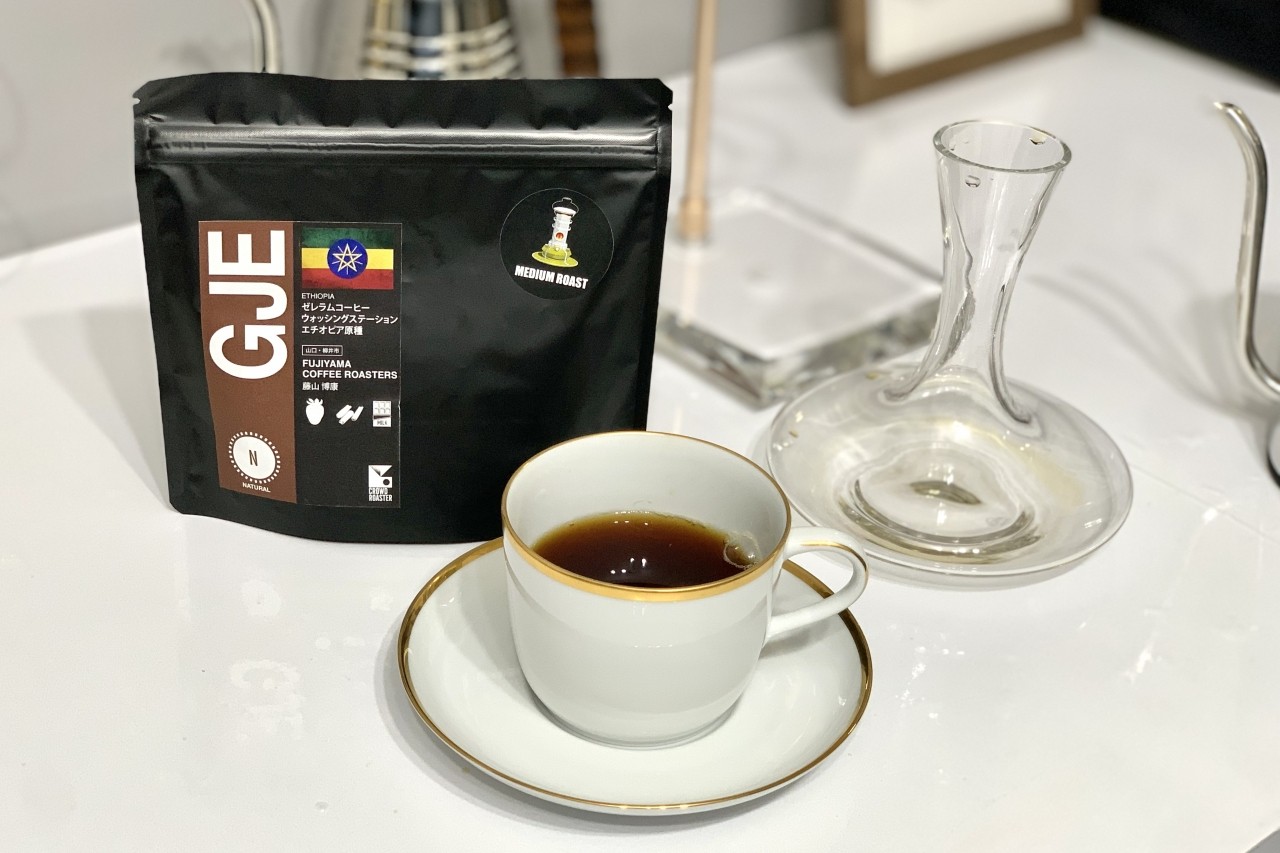
Next, we will have coffee roasted by FUJIYAMA COFFEE ROASTERS Hiroyasu .
You can feel the firm sweetness from the moment you put it in your mouth to the aftertaste.
Smooth chocolate and dried fig flavors.
A light mouthfeel with a smooth mouthfeel.
My hand can't stop bringing the cup to my mouth, and I feel like I'll finish it right away if I let my guard down.
I was wondering if it would be better to brew this roasted bean with a little more concentration, but I thought that if I extracted too much, it would give a dark and one-sided flavor, so I decided to brew it this way.
Even though it was brewed with a clean taste, it was a natural process coffee that was heated to a certain extent, so it had a smooth mouthfeel, and the flavor was rich and spread in the mouth, so this is the correct answer. It seems like it was.
It's sweet anyway.
It almost makes me abandon all other forms of expression...
As it cools down, it starts to take on an apricot-like appearance.
Also, it had a humus-like scent and a slightly bitter taste.
I think it comes from the ingredients, so it can't be helped, but it does hinder the sweetness a little.
However, like before, the negative impression is not that strong, so you can thoroughly enjoy it until the end.
I've said it many times, but it's really sweet.
You can feel the firm sweetness from the moment you put it in your mouth to the aftertaste.
Smooth chocolate and dried fig flavors.
A light mouthfeel with a smooth mouthfeel.
My hand can't stop bringing the cup to my mouth, and I feel like I'll finish it right away if I let my guard down.
I was wondering if it would be better to brew this roasted bean with a little more concentration, but I thought that if I extracted too much, it would give a dark and one-sided flavor, so I decided to brew it this way.
Even though it was brewed with a clean taste, it was a natural process coffee that was heated to a certain extent, so it had a smooth mouthfeel, and the flavor was rich and spread in the mouth, so this is the correct answer. It seems like it was.
It's sweet anyway.
It almost makes me abandon all other forms of expression...
As it cools down, it starts to take on an apricot-like appearance.
Also, it had a humus-like scent and a slightly bitter taste.
I think it comes from the ingredients, so it can't be helped, but it does hinder the sweetness a little.
However, like before, the negative impression is not that strong, so you can thoroughly enjoy it until the end.
I've said it many times, but it's really sweet.
After finishing the drinking comparison

This time, we compared two drinks with different degrees of roasting, so the tastes were very different.
Although both coffees were mild and did not have a strong Ethiopian characteristic aroma, they had a distinct sweetness.
It might be good to enjoy it with sweets etc. on a daily basis.
This time, I received coffees finished at "light roast" and "medium roast" roast levels, but I feel that different roast levels have the potential to greatly change the flavor.
Why not enjoy this [GJE] with your favorite roaster?
This is not a review that guarantees that you will definitely experience the taste mentioned above, but rather just my personal impressions, but I hope that it will be of some help to you in your coffee life.
That's all for today.
May good coffee be in your life.
Takeru
Although both coffees were mild and did not have a strong Ethiopian characteristic aroma, they had a distinct sweetness.
It might be good to enjoy it with sweets etc. on a daily basis.
This time, I received coffees finished at "light roast" and "medium roast" roast levels, but I feel that different roast levels have the potential to greatly change the flavor.
Why not enjoy this [GJE] with your favorite roaster?
This is not a review that guarantees that you will definitely experience the taste mentioned above, but rather just my personal impressions, but I hope that it will be of some help to you in your coffee life.
That's all for today.
May good coffee be in your life.
Takeru
We received comments from roasters!
We received comments from roasters who read this user review.
I would like to introduce the comments.
Mikami Hitomi
``I'm very happy that you can taste the flavors of strawberries and cherries.The aftertaste is unique, and there are some places where you can feel a bit of bitterness when cooked (the beans are small and easily cooked), but it's a light roast. However, we adjust the roasting to take into account the balance of bitterness.We are glad that you enjoyed the delicate flavors.''
Fujiyama Hiroyasu
``I think that Ethiopian Natural coffee is coffee beans that are characterized by their sweetness, as mentioned in the comments. In order to bring out its sweetness to the fullest, we shortened the roasting time, added some calories, and finished it with a medium roast. I am very happy to have received exactly the comment I was looking for.”
With CROWD ROASTER app, you can actually exchange comments with roasters. Please, try it.
If you want to enjoy coffee more deeply
" CROWD ROASTER APP"
Manabu at CROWD ROASTER LOUNGE
・Push notifications for article updates・Full of original articles exclusive to CROWD ROASTER
・Direct links to detailed information about green beans and roasters
App-only features
- Choose green beans and roasters to create and participate in roasting events・CROWD ROASTER SHOP: Everything from beans to equipment is readily available
・GPS-linked coffee map function

